Yes, Texas is home to a remarkable array of owls, boasting a diverse collection of these nocturnal wonders. With a total of 16 distinct species, the Lone Star State provides a rich tapestry for owl enthusiasts and nature lovers alike.
From the iconic Great Horned Owl, a powerful predator with tufted ears, to the elusive Eastern Screech Owl, these birds navigate various ecosystems, each contributing to the intricate balance of Texas’ wildlife.
This exploration delves into the fascinating lives of these owls, silent hunters of the night, expertly adapted to their surroundings.
Join us on a journey through the diverse landscapes of Texas as we unveil the beauty and significance of the 16 species that call this state home. Stay focused.
16 Owls in Texas
Check out the enchanting world of owls in Texas, where diverse species thrive in various habitats. Each species brings a unique charm, from the iconic Barn owl to the secretive Northern Saw-whet Owl’s nocturnal mysteries.
Explore the fascinating lifestyles of owls, from mighty hunters to elusive cavity-nesters, in this curated list.
1. Great Horned Owl
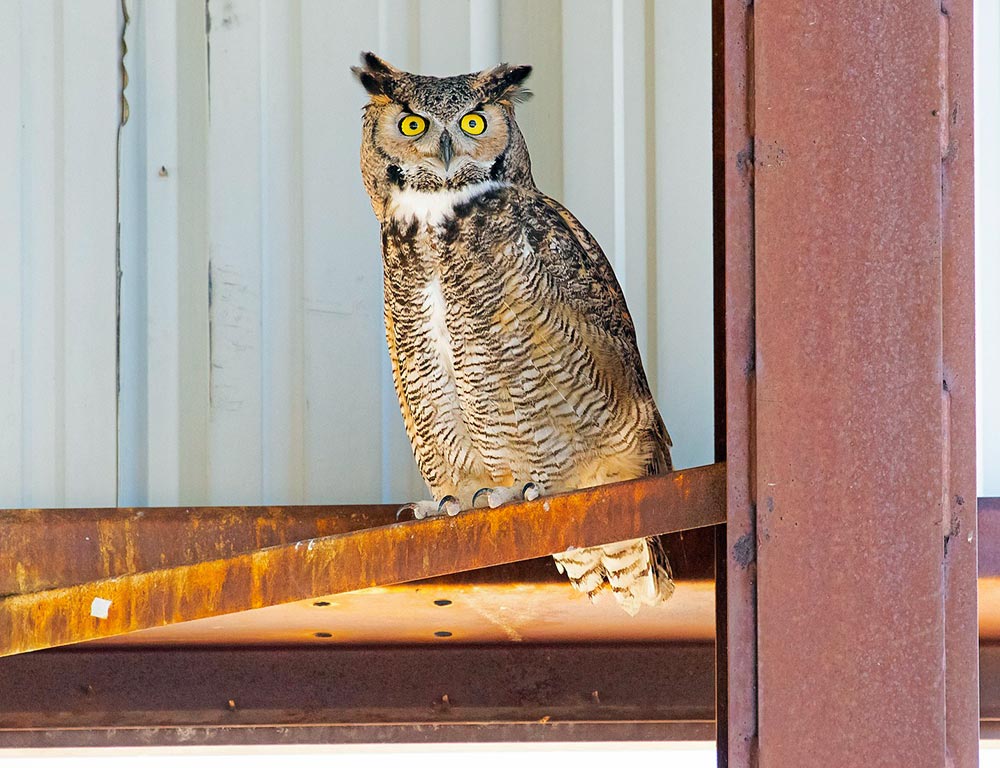
- Scientific name: Bubo virginianus
- Population: Common and widespread in Texas
- Life span: 10-15 years in the wild
- Size: 18-25 inches
- Weight: 2-5.5 pounds
- Food: Carnivorous diet, preying on mammals, birds, and other small animals
- Wingspan: 3.3-4.8 feet
The Great Horned Owl, a powerful and adaptable predator, thrives in various habitats across Texas, from forests to open plains.
Named for its prominent ear tufts, not horns, this owl is a skilled hunter with excellent night vision and hearing. They are formidable hunters with a diverse diet ranging from rodents to larger prey like rabbits and birds.
Great Horned Owls are known for nesting in various locations, including abandoned nests of other large birds. This species displays strong territorial behavior, fiercely defending its nesting territory.
Mating for life, Great Horned Owls typically lay eggs in the winter months. They are well adapted to both urban and rural environments, making them a common and iconic sight in the Texas night sky.
2. Barn Owl
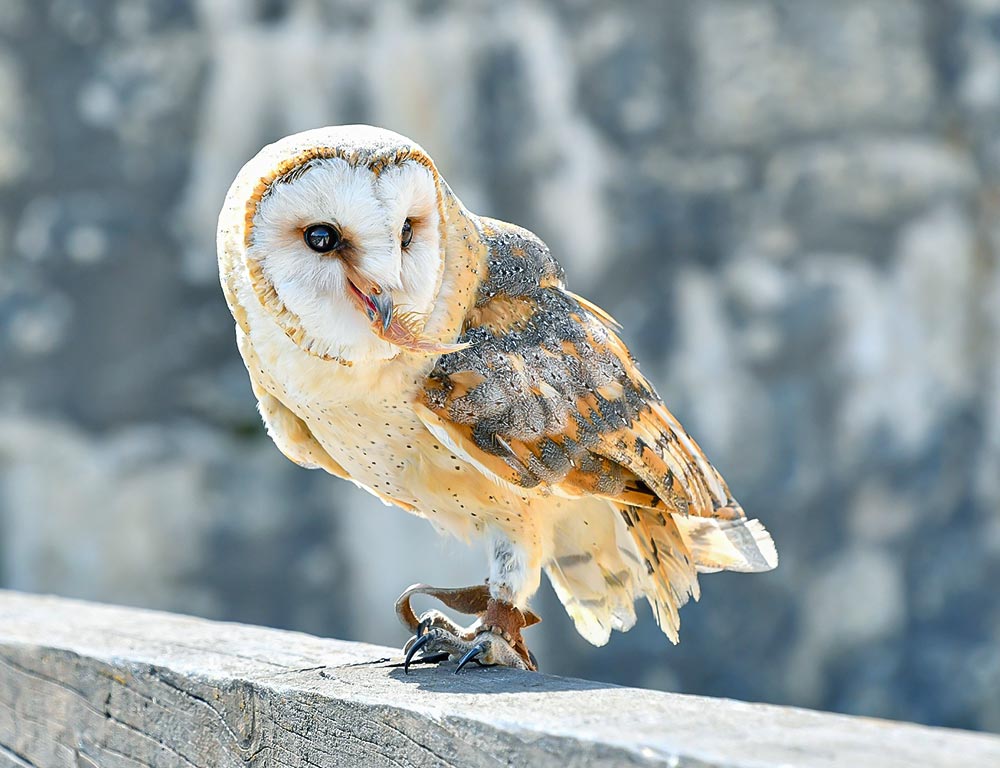
- Scientific name: Tyto alba
- Population: Widespread but declining due to habitat loss
- Life span: 1-2 years in the wild
- Size: 12-15 inches
- Weight: 14-24 ounces
- Food: Primarily small mammals like rodents
- Wingspan: 38-47 inches
Barn Owls, with their heart-shaped facial discs and pale plumage, are efficient nocturnal hunters found in various habitats, from rural farmlands to urban areas.
Highly specialized for capturing rodents, their primary prey, these silent flyers possess exceptional hearing to locate prey in complete darkness. Unfortunately, their populations are at risk due to habitat destruction and pesticide exposure.
Known for nesting in barns, tree cavities, and other secluded spots, Barn Owls are solitary and territorial birds.
Their breeding season is influenced by food availability, with peak activity in the spring. Conservation efforts are crucial to maintaining and restoring their populations in Texas.
3. Barred Owl
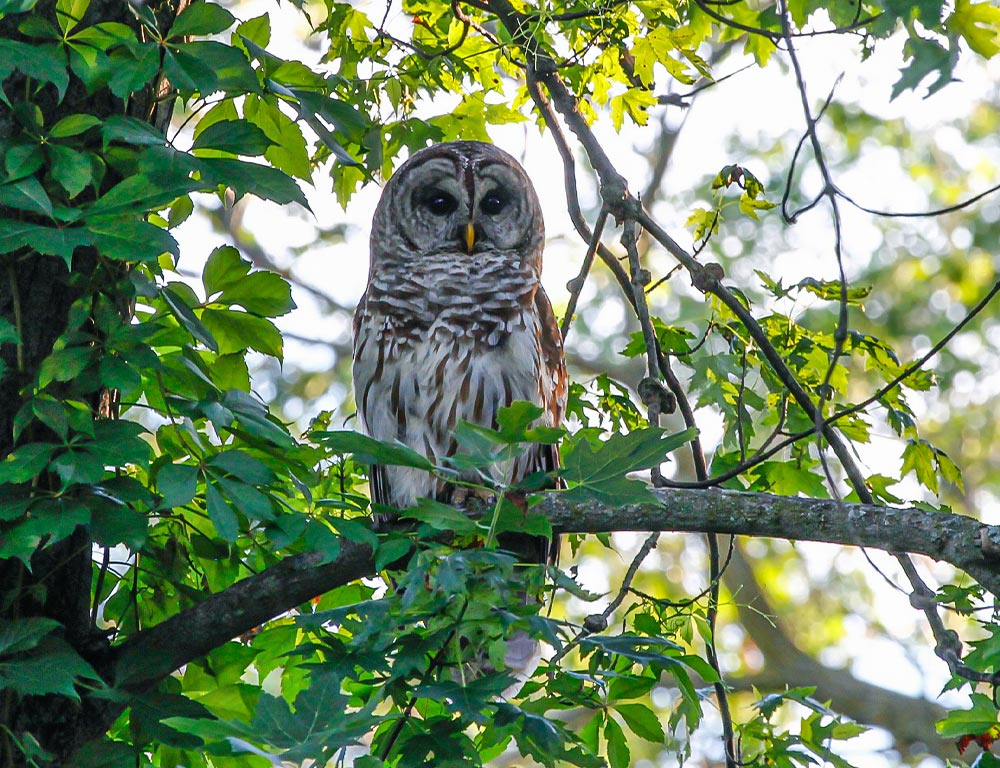
- Scientific name: Strix varia
- Population: Stable and widespread
- Life span: 10 years in the wild
- Size: 16-25 inches
- Weight: 1-2.3 pounds
- Food: Varied diet, including small mammals, birds, and amphibians
- Wingspan: 38-50 inches
With distinctive barred plumage and dark, soulful eyes, Barred Owls are found in mature forests and wooded areas throughout Texas.
Their call, a haunting Who cooks for you? Who cooks for you all? Is a characteristic woodland sound. These adaptable owls have successfully adapted to suburban and urban environments.
Barred Owls are opportunistic hunters, seizing prey from both the ground and trees. They are known for tolerating human presence and are often spotted near water sources.
Monogamous and territorial during breeding season, these owls nest in tree cavities. Conserving their wooded habitats is vital to ensuring the continued success of Barred Owl populations in Texas.
4. Eastern Screech Owl
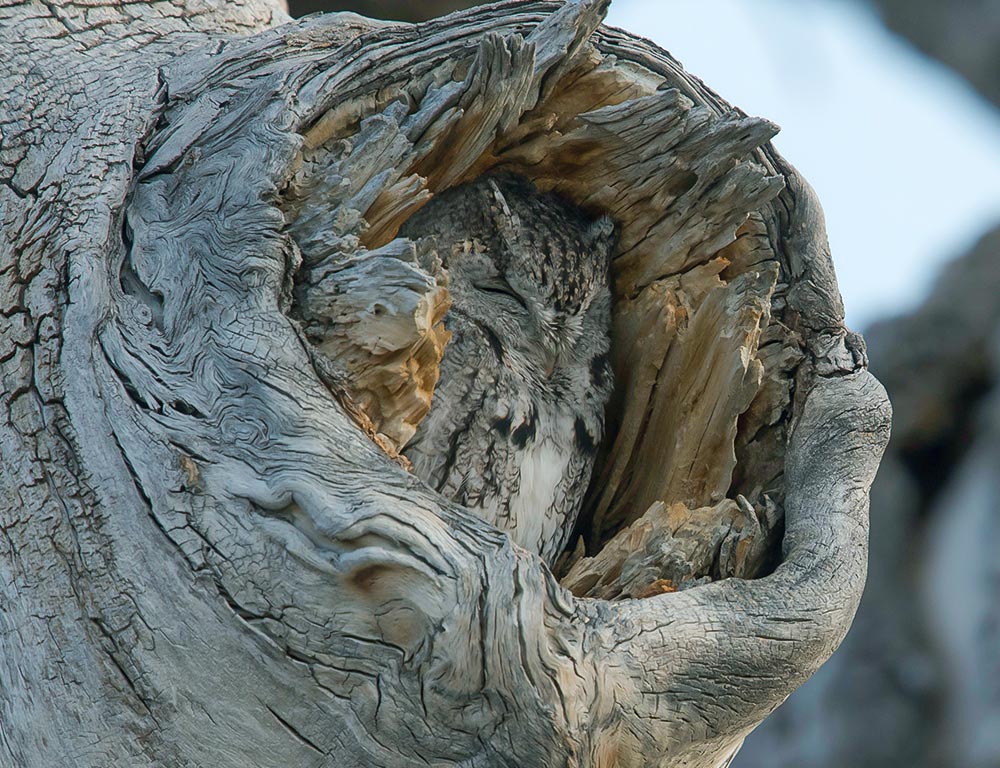
- Scientific name: Megascops asio
- Population: Common and widespread in suitable habitats
- Life span: 3-7 years in the wild
- Size: 6.3-9.8 inches
- Weight: 4.3-8.6 ounces
- Food: Mainly insects, small mammals, and birds
- Wingspan: 18-24 inches
Eastern Screech Owls, with their distinctive ear tufts and expressive facial expressions, are adaptable birds found in various habitats, including woodlands, suburban areas, and parks.
They come in two color morphs: red (rufous) and gray, providing them excellent camouflage in their surroundings.
Nocturnal hunters, these owls use their keen hearing and vision to locate prey. Their diet consists mainly of insects, small mammals, and birds.
Eastern Screech Owls nest in tree cavities, and they are known for their vocalizations, including trills and whinnies.
Despite their small size, they are territorial and can be seen displaying aggressive behaviors, especially during the breeding season.
5. Burrowing Owl
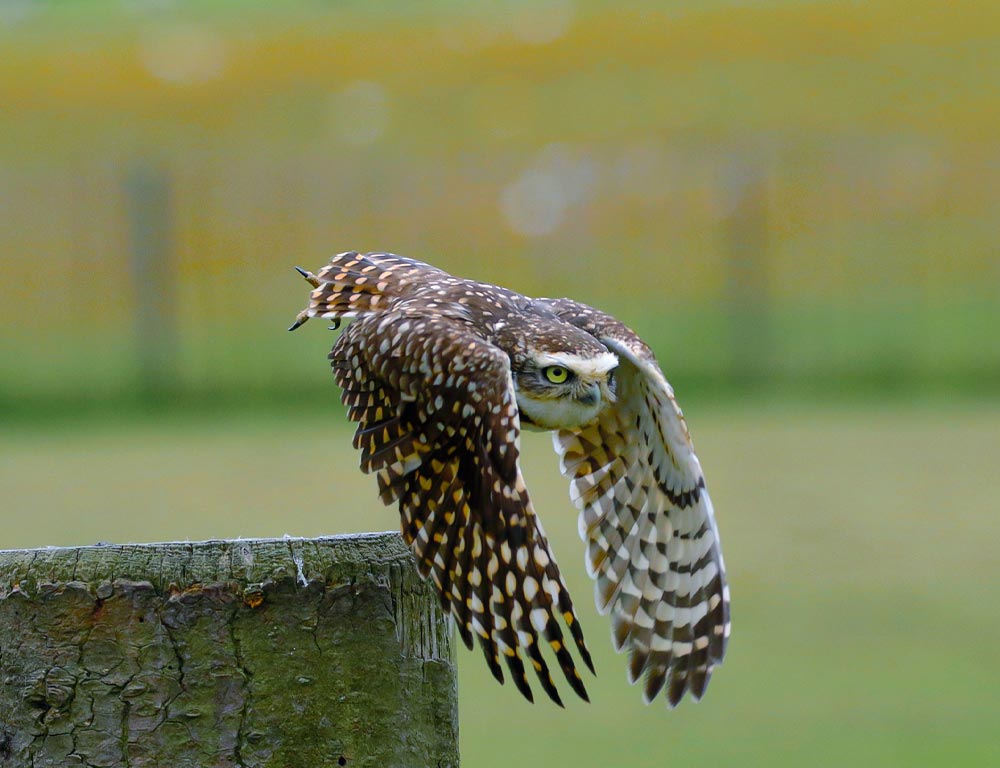
- Scientific name: Athene cunicularia
- Population: Declining due to habitat loss
- Life span: 6-8 years in the wild
- Size: 7.5-10 inches
- Weight: 5-8 ounces
- Food: Primarily insects, small mammals, and birds
- Wingspan: 21-24 inches
Burrowing Owls are distinctive for their long legs and habitat preference for open areas with low vegetation. They are often associated with prairies, deserts, and grasslands.
As their name suggests, Burrowing Owls nest in burrows, either digging their own or repurposing abandoned burrows of mammals. Unfortunately, their populations are at risk due to habitat loss and changes in land use.
These diurnal owls hunt during the day, capturing insects, small mammals, and birds. They are known for their ground-dwelling behavior, frequently standing near their burrows.
Burrowing Owls are also unique in their ability to mimic rattlesnake sounds as a defense mechanism. Conservation efforts to protect their natural habitats are crucial for the survival of Burrowing Owls in Texas.
6. Screech Owl (Western Screech Owl in Texas)
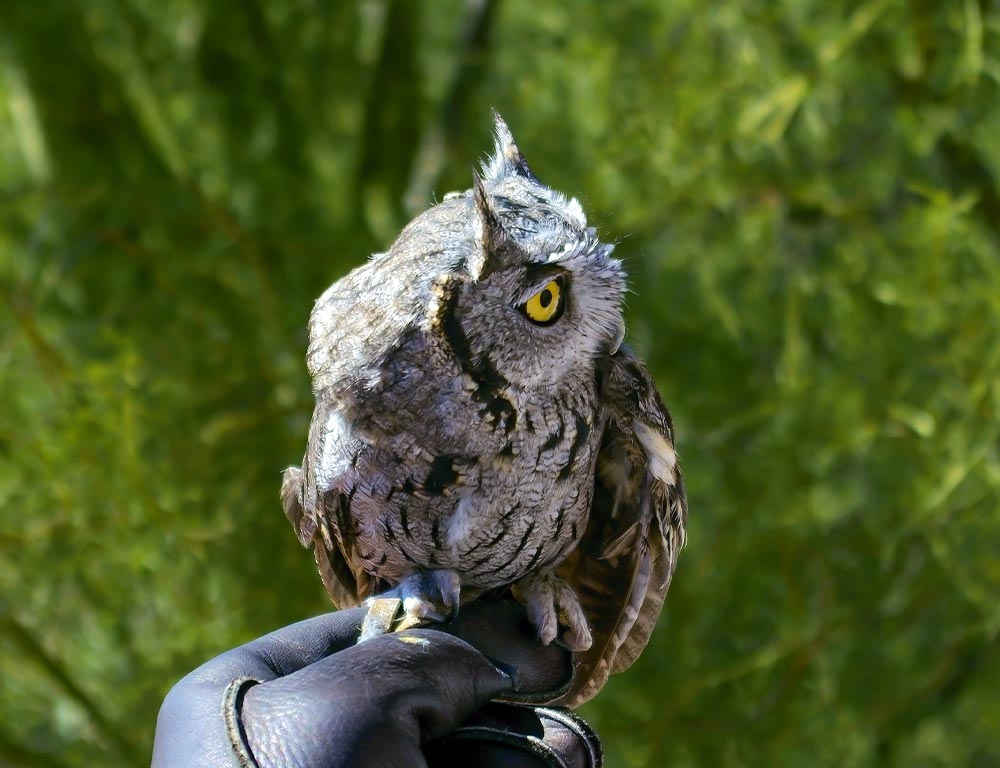
- Scientific name: Megascops kennicottii
- Population: Stable, but habitat loss is a concern
- Life span: 3-7 years in the wild
- Size: 7.5-9.8 inches
- Weight: 4-8 ounces
- Food: Mainly insects, small mammals, and birds
- Wingspan: 21-24 inches
The Western Screech Owl, found in the western part of Texas, is similar in many aspects to the Eastern Screech Owl.
These small owls are highly adaptable, residing in various habitats such as woodlands, canyons, and suburban areas. They come in various color morphs, including gray and rufous, aiding in camouflage.
Like their Eastern counterparts, Western Screech Owls are nocturnal hunters. Their diet consists of insects, small mammals, and birds. They are cavity-nesters, using tree hollows or nest boxes for shelter.
These owls are known for their distinct calls, including trills and whinnies. Conservation efforts focusing on preserving diverse habitats are essential to ensure the continued presence of Western Screech Owls in Texas.
7. Short-eared Owl
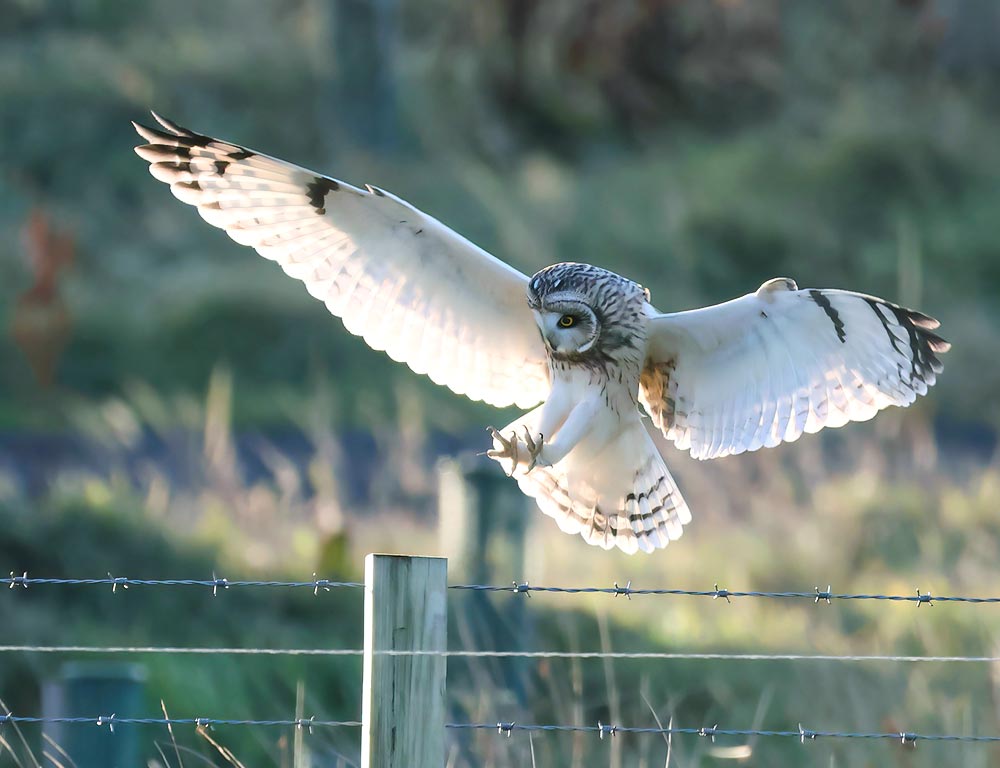
- Scientific name: Asio flammeus
- Population: Generally widespread, but populations may fluctuate
- Life span: 3-5 years in the wild
- Size: 13.4-16.9 inches
- Weight: 7.3-16.8 ounces
- Food: Mainly small mammals, supplemented with birds
- Wingspan: 33.5-40.5 inches
Short-eared Owls are recognizable by their distinctive facial disk and the tufts of feathers resembling “ears.” They prefer open habitats like grasslands and marshes.
As crepuscular and diurnal hunters, Short-eared Owls are often seen flying low over fields in search of small mammals, particularly voles and mice. Their widespread distribution can vary seasonally, influenced by prey availability.
These owls are known for their aerial displays during courtship, involving dramatic flight maneuvers. Short-eared Owls do not build nests but lay eggs on the ground in open habitats, relying on camouflage for protection.
Conservation efforts focus on preserving their diverse habitats and managing grassland ecosystems to maintain suitable hunting grounds.
8. Elf Owl
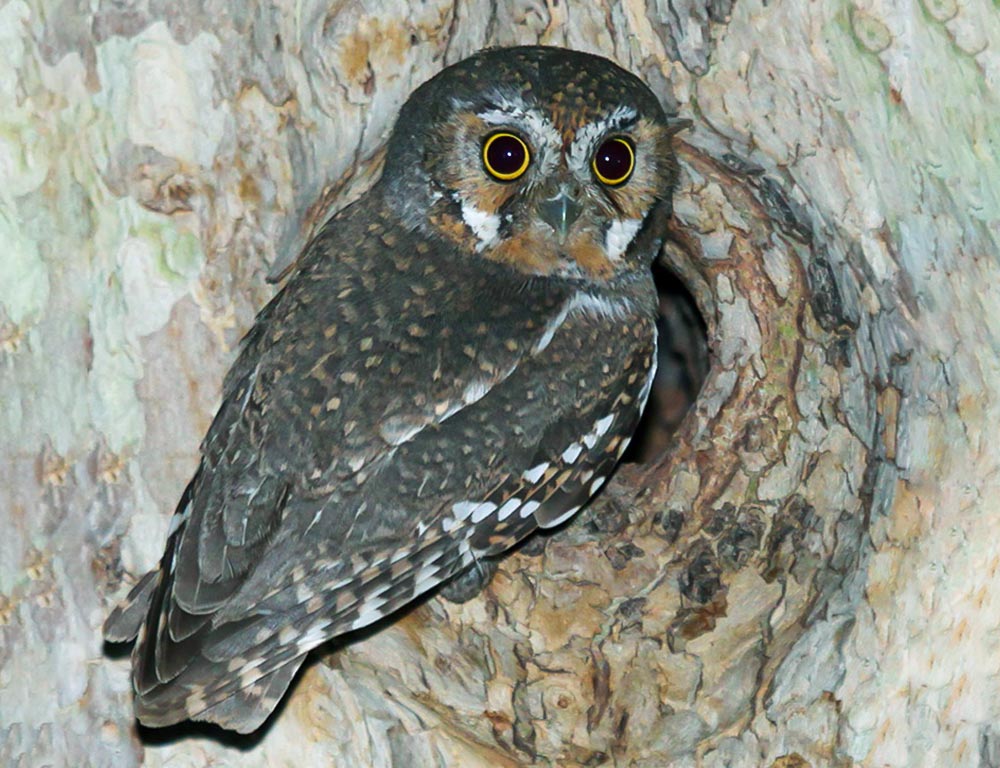
- Scientific name: Micrathene whitneyi
- Population: Generally stable, but specific populations may be vulnerable
- Life span: 3-6 years in the wild
- Size: 5.1-5.9 inches
- Weight: 1.4-1.7 ounces
- Food: Primarily insects, supplemented with small vertebrates
- Wingspan: 9.8-10.6 inches
The Elf Owl is the smallest owl species in the world, known for its tiny size and large, expressive eyes. It inhabits arid regions, such as deserts and semi-open woodlands. Elf Owls are primarily insectivorous, preying on moths, beetles, and other insects.
They are adapted to the desert climate, and their small size allows them to utilize tree cavities for nesting. Elf Owls are nocturnal hunters, and their breeding season coincides with the availability of their insect prey.
Despite their diminutive size, they have a distinctive and sharp call. Conservation efforts focus on protecting their nesting sites and preserving the ecosystems of the southwestern United States, including Texas.
9. Long-eared Owl
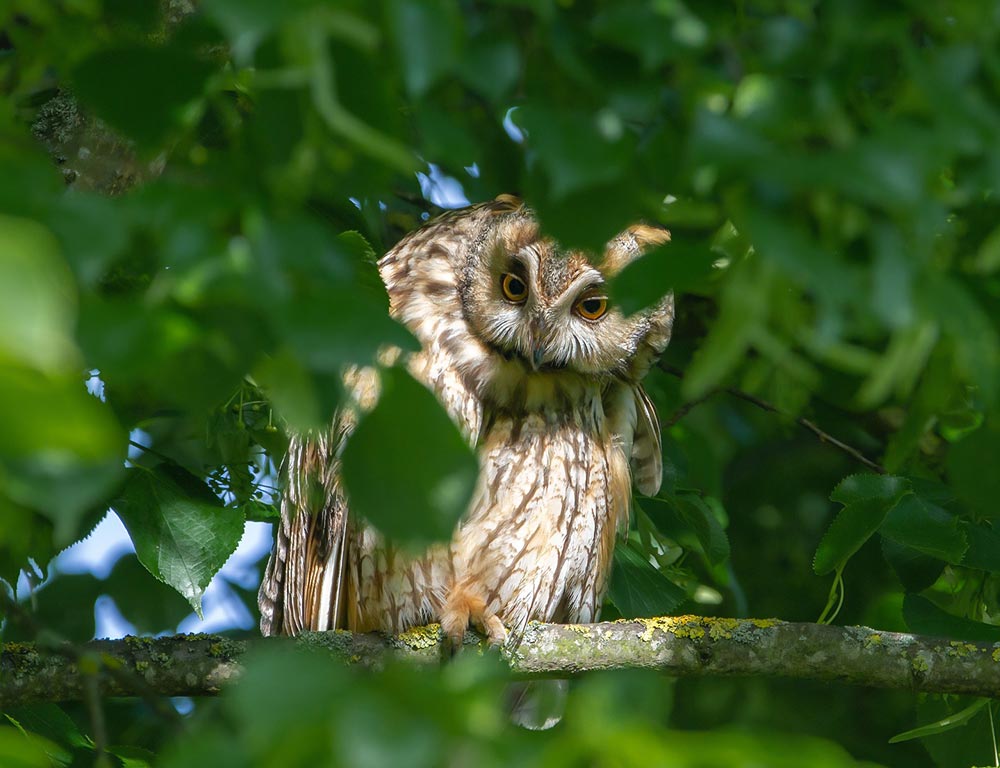
- Scientific name: Asio otus
- Population: Variable, depending on prey availability and habitat
- Life span: 4-8 years in the wild
- Size: 13.8-15.8 inches
- Weight: 7.3-15.3 ounces
- Food: Mainly small mammals, supplemented with birds
- Wingspan: 35.4-39.4 inches
Long-eared Owls are characterized by their prominent “ear” tufts and distinctive facial disk. They are primarily found in woodlands, often roosting in dense vegetation during the day.
These owls are nocturnal hunters, relying on their excellent hearing to locate small mammals like mice and voles. Long-eared Owls are known for their communal roosting behavior, gathering in groups during the non-breeding season.
During the breeding season, they become more solitary. Conservation efforts for Long-eared Owls involve protecting their nesting and roosting sites in woodlands and managing forested areas to maintain suitable hunting grounds.
Maintaining healthy prey populations is also crucial for the survival of Long-eared Owls in Texas.
10. Snowy Owl
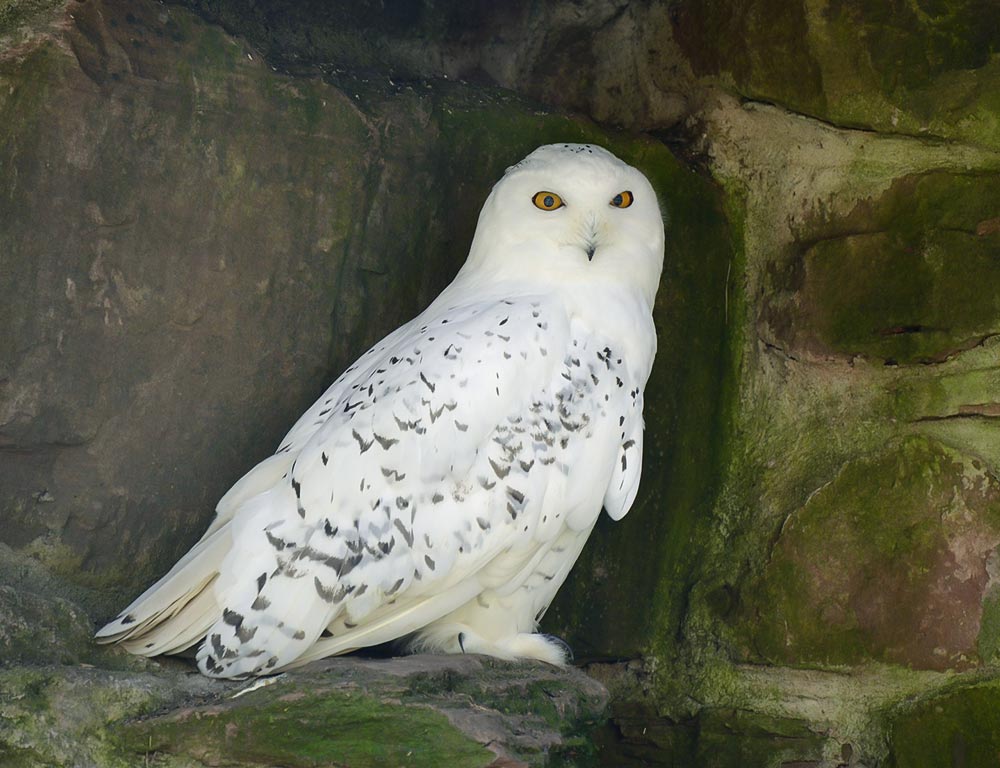
- Scientific name: Bubo scandiacus
- Population: Circumpolar distribution; migratory, with occasional winter sightings in Texas
- Life span: 9-10 years in the wild
- Size: 20.5-27.9 inches
- Weight: 3.5-6.6 pounds
- Food: Primarily lemmings, but also birds and small mammals
- Wingspan: 49.6-57.1 inches
Snowy Owls are iconic Arctic birds known for their striking white plumage and piercing yellow eyes.
While they primarily inhabit the Arctic tundra, they occasionally migrate south during irruption years, leading to rare winter sightings in Texas. During the breeding season, they nest on the ground, creating a simple depression in the Arctic landscape.
These owls are powerful hunters, relying on their excellent vision to spot prey from a distance. Their diet mainly consists of lemmings but also targets birds and other small mammals.
Conservation efforts focus on understanding and protecting their breeding grounds in the Arctic and minimizing disturbances during migration periods.
11. Western Screech Owl
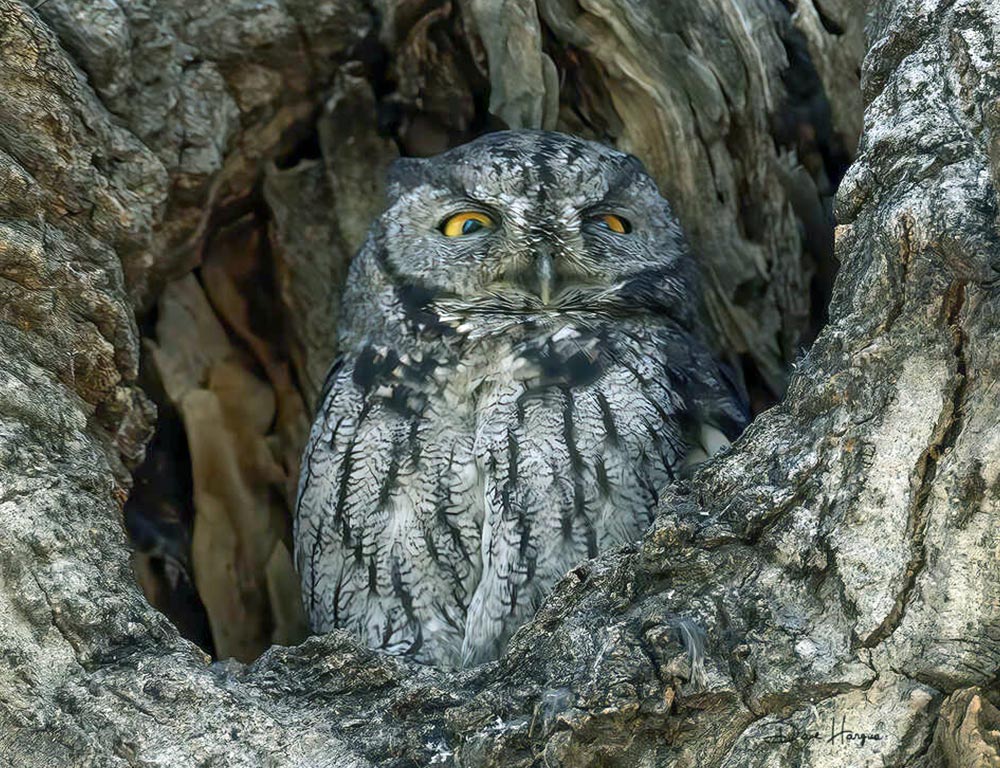
- Scientific name: Megascops kennicottii
- Population: Stable, but habitat loss can pose a threat
- Life span: 3-14 years in the wild
- Size: 7.5-9.8 inches
- Weight: 4-8 ounces
- Food: Mainly insects, small mammals, and birds
- Wingspan: 21-24 inches
As mentioned earlier, the Western Screech Owl inhabits various habitats, including woodlands, canyons, and suburban areas in Texas. They come in different color morphs, providing effective camouflage.
These owls are nocturnal hunters, preying on insects, small mammals, and birds. Conservation efforts are essential to maintain their habitats and ensure their continued presence in the region.
12. Flammulated Owl
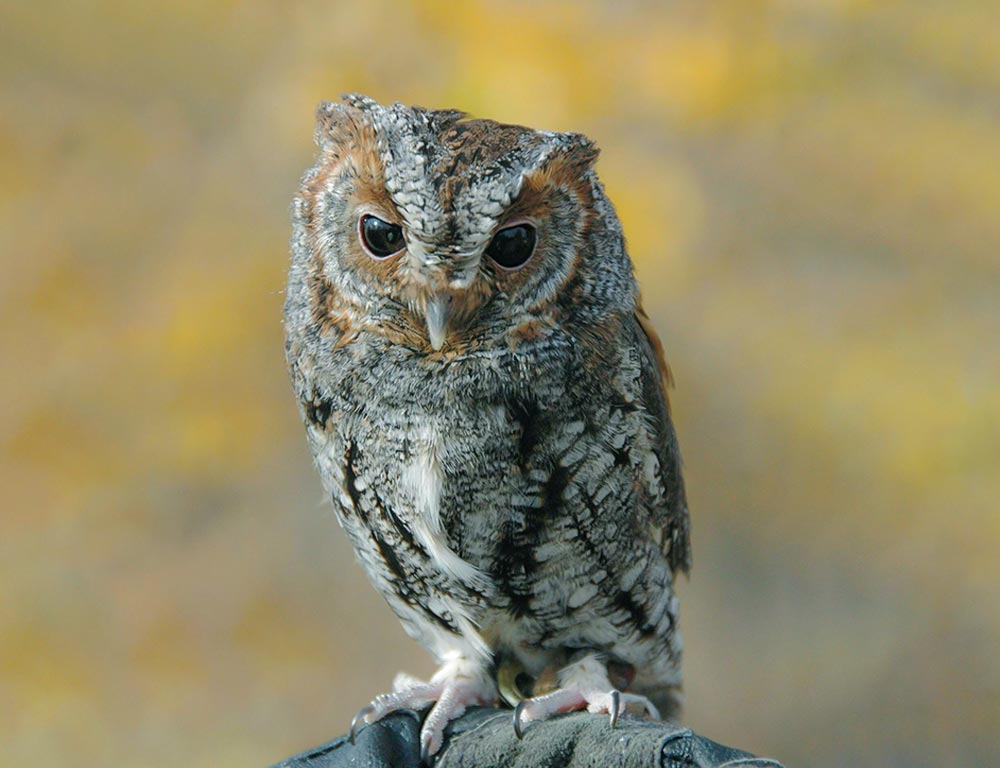
- Scientific name: Psiloscops flammeolus
- Population: Generally stable, but data may be limited
- Life span: 4-7 years in the wild
- Size: 6.7-7.5 inches
- Weight: 1.5-2.2 ounces
- Food: Primarily insects, especially moths
- Wingspan: 16.5-18.9 inches
Flammulated Owls are small and inconspicuous, with a preference for pine-oak woodlands and coniferous forests. They are nocturnal insectivores specializing in hunting moths and other flying insects.
These owls use natural tree cavities or abandoned woodpecker holes for nesting. Their elusive nature and reliance on insect populations make studying them challenging.
Conservation efforts involve maintaining healthy forest ecosystems, especially those with a mix of deciduous and coniferous trees, to provide suitable breeding and foraging grounds.
13. Ferruginous Pygmy Owl
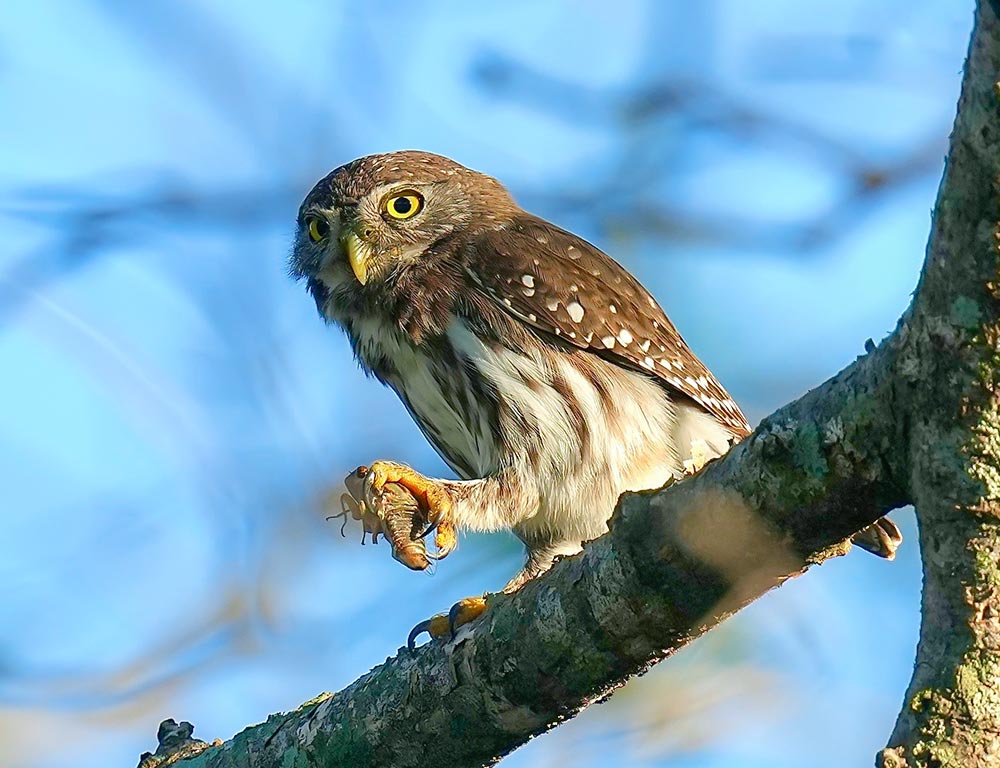
- Scientific name: Glaucidium brasilianum
- Population: Stable, but localized populations may face threats
- Life span: 3-7 years in the wild
- Size: 6.3-7.1 inches
- Weight: 2.4-2.8 ounces
- Food: Primarily small birds, insects, and small mammals
- Wingspan: 12.6-14.2 inches
The Ferruginous Pygmy Owl is a small owl with a widespread range in the Americas, including parts of Texas. It prefers a variety of habitats, from tropical forests to arid scrublands.
Despite its small size, it is an aggressive predator, targeting small birds, insects, and small mammals. These owls are cavity-nesters, using natural tree hollows or abandoned woodpecker nests.
Their distinctive call, resembling the sound of a whistling flute, is a characteristic feature. Conservation efforts focus on protecting their habitats and raising awareness about their importance in maintaining balanced ecosystems.
14. Northern Saw-whet Owl
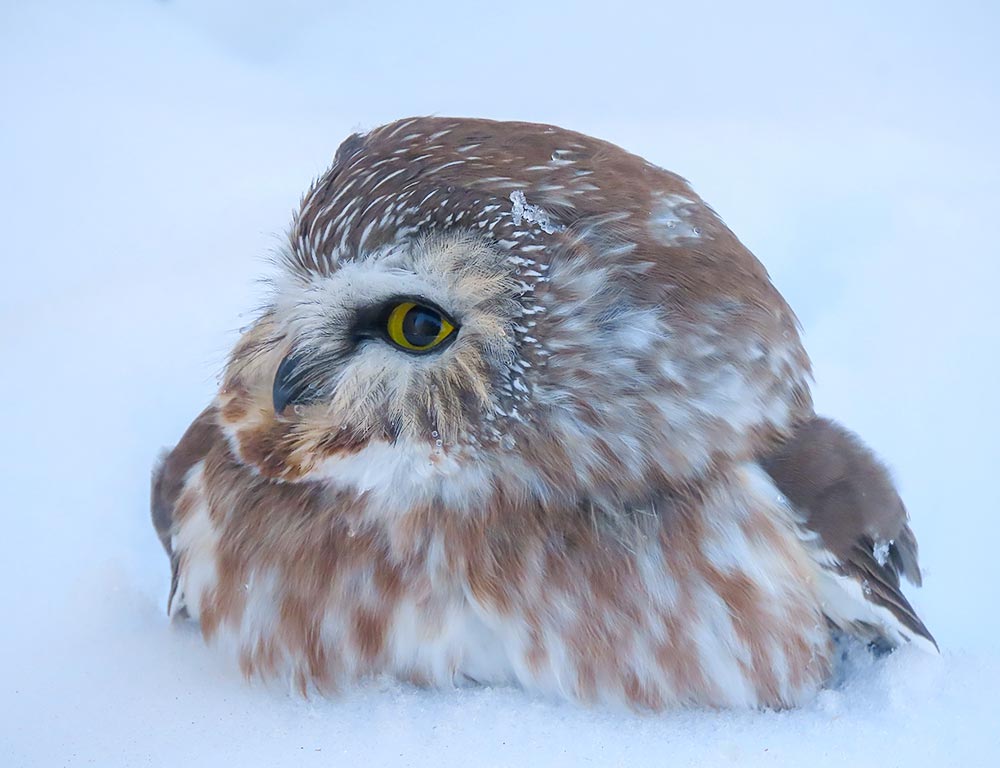
- Scientific name: Aegolius acadicus
- Population: Generally stable, but specific populations may be vulnerable
- Life span: 3-7 years in the wild
- Size: 7.1-8.3 inches
- Weight: 2.3-5.3 ounces
- Food: Primarily small mammals, especially mice and voles
- Wingspan: 16.5-18.9 inches
The Northern Saw-whet Owl is a small, nocturnal owl with a distinctive appearance. Despite its relatively widespread distribution, it can be challenging to observe due to its secretive nature and preference for dense vegetation.
These owls primarily feed on small mammals, such as mice and voles, using their keen hearing and vision to locate prey in the dark.
Northern Saw-whet Owls are cavity-nesters, utilizing natural tree hollows or abandoned woodpecker nests for breeding. Their high-pitched, repetitive tooting calls are often heard during the breeding season.
Conservation efforts focus on maintaining healthy forest ecosystems, as these owls are sensitive to habitat fragmentation and degradation.
15. Spotted Owl
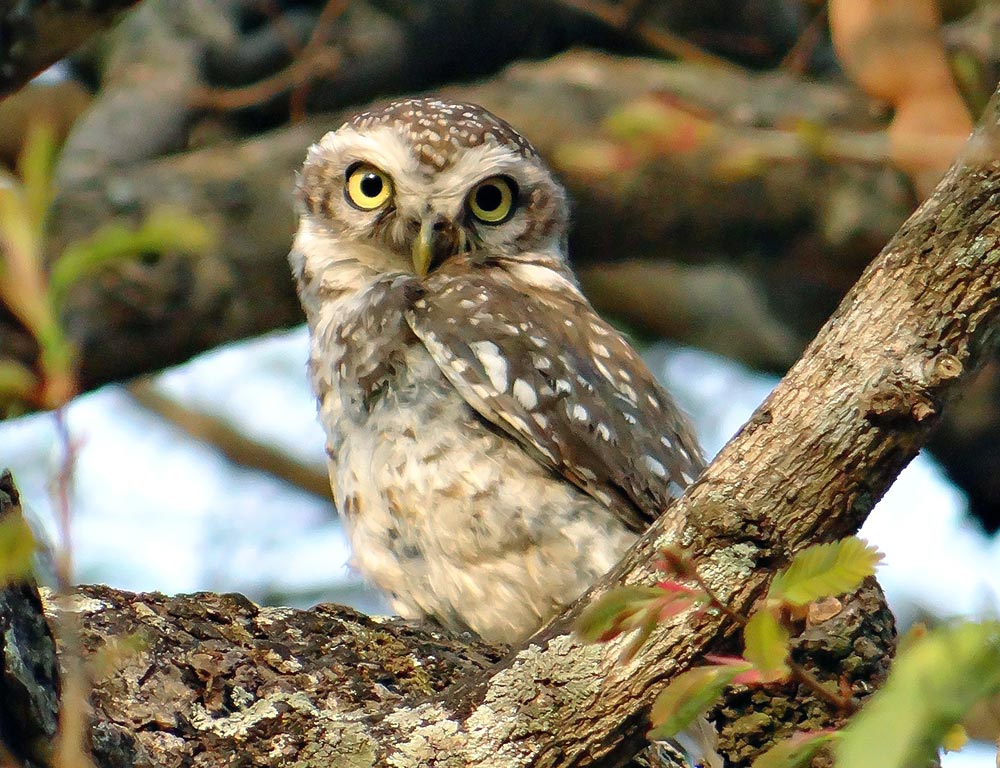
- Scientific name: Strix occidentalis
- Population: Declining, particularly in certain regions
- Life span: 4-15 years in the wild
- Size: 17-18.5 inches
- Weight: 1.5-2.5 pounds
- Food: Mainly small mammals, birds, and some insects
- Wingspan: 44-49 inches
The Spotted Owl, known for its dark eyes and mottled brown plumage, is an iconic and controversial species associated with old-growth forests in the Pacific Northwest.
They have faced significant declines due to habitat loss and competition with the barred owl, an invasive species. Spotted Owls primarily feed on small mammals, birds, and insects.
These owls nest in tree cavities, preferring mature and old-growth forests. Conservation efforts involve protecting their remaining habitats, managing forests to maintain suitable conditions, and addressing the threats posed by invasive species.
16. Northern Pygmy Owl
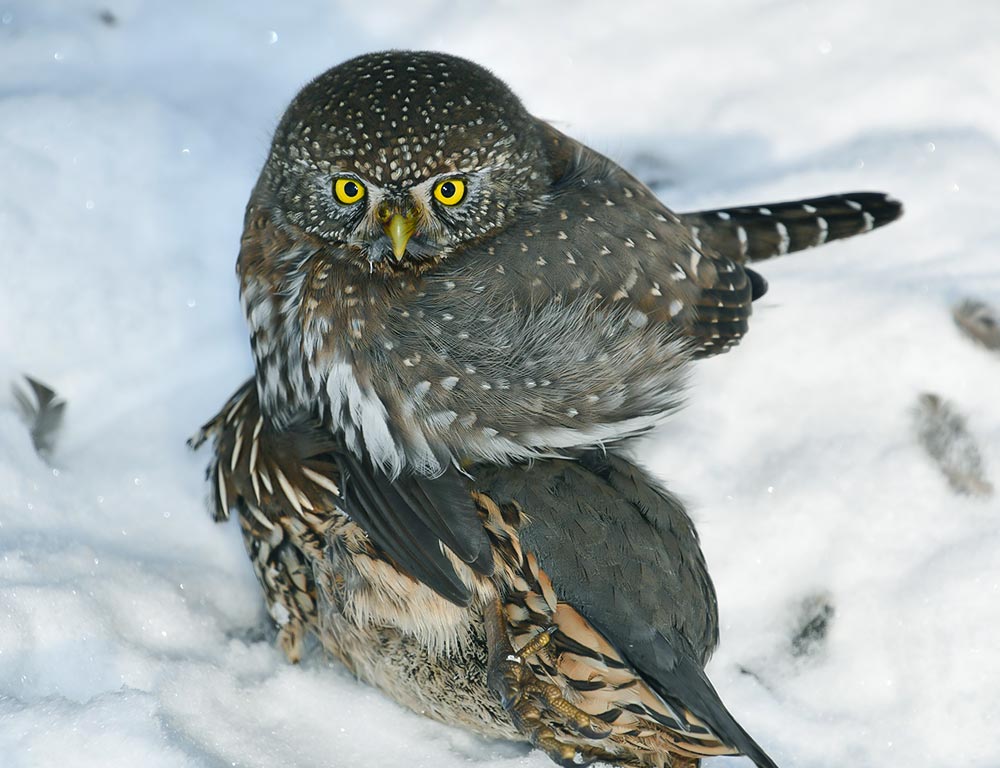
- Scientific name: Glaucidium gnoma
- Population: Variable, with localized declines in some regions
- Life span: 3-7 years in the wild
- Size: 6.3-7.1 inches
- Weight: 2.1-2.5 ounces
- Food: Primarily small birds and mammals, supplemented with insects
- Wingspan: 10.5-12.5 inches
The Northern Pygmy Owl is a small owl with a distinctive appearance: a round head and a short tail.
Despite its small size, it is a fierce predator, preying on small birds and mammals. These owls are diurnal hunters, actively seeking prey during daylight hours.
Northern Pygmy Owls nest in tree cavities, using natural hollows or abandoned woodpecker nests. Their territories can span from coniferous forests to mixed woodlands.
Conservation efforts focus on understanding their ecological needs and addressing habitat loss and fragmentation threats. Maintaining a balance between forest management and owl conservation is crucial for their survival.
Wrapping Up
In the nocturnal tapestry of Texas, owls weave intricate stories of survival and adaptation. From the mighty Snowy Owl’s Arctic journeys to the secretive Spotted Owl’s forest realm, these birds embody the diversity of ecosystems within the Lone Star State.
Each owl species, from the diminutive Elf Owl to the powerful Great Horned Owl, contributes to the ecological balance, showcasing nature’s artistry.
As we delve into the unique lifestyles of owls, we witness the delicate interplay between these avian inhabitants and their habitats.
Conservation efforts become crucial, ensuring the preservation of these majestic creatures and the ecosystems they call home.
Owls in Texas captivate not only with their ethereal beauty but also with their vital roles in maintaining the delicate harmony of the natural world. Thank you so much.